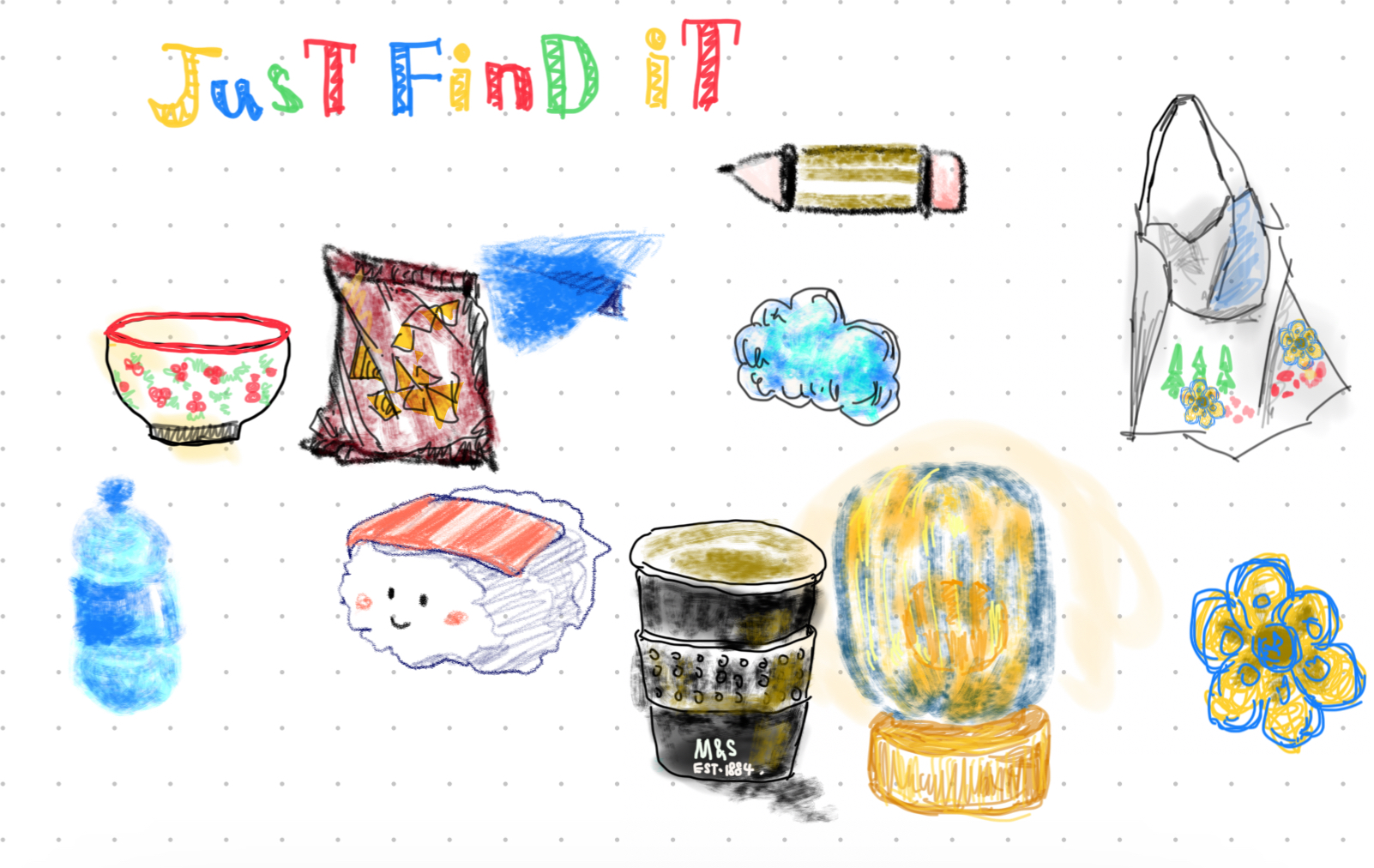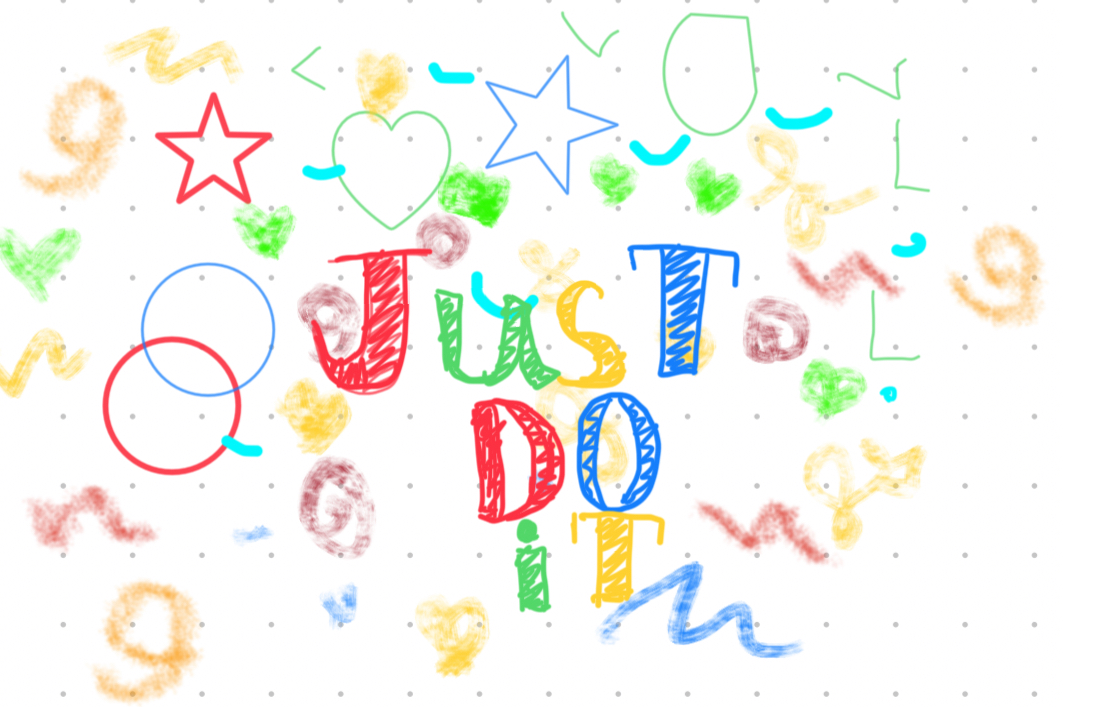Returning to Childhood: You are an Artistic Genius
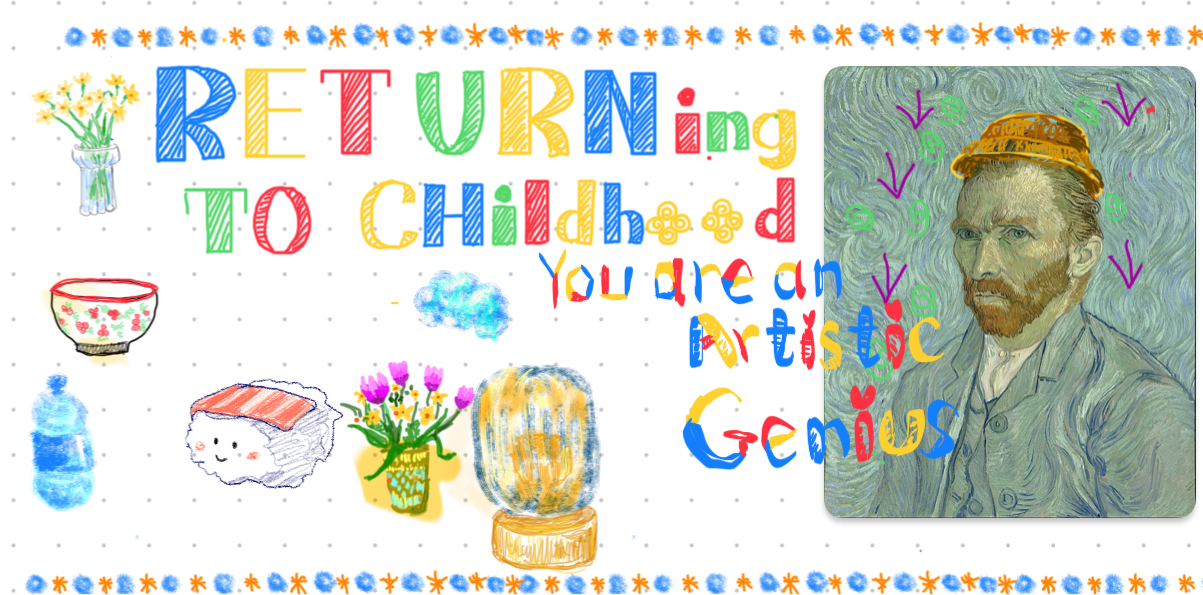
Summary
Help participants rediscover the beauty of art in everyday life.
When I graduated from my Bachelor's Degree, I found out at work that children's bold colour schemes and creativity are irreplaceable and unimaginable by so-called professionals.
How to guides people(not only professional people) to discover the beauty of everyday life, to create freely, to reconstruct the classics, and to feel the infinite possibilities of art creation, like a child without fear.
“How long has it been since you have created something at will like a child?”
“If you hadn’t studied art, do you think you would be able to create something worthwhile?”
Picasso said once: “Every child is an artist. The problem is how to remain an artist once we grow up.
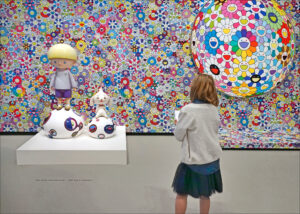
L’exposition Takashi Murakami (Fondation Vuitton, Paris)” by dalbera is licensed under CC BY 2.0.

“Pumpkin” by Yayoi Kusama in Naoshima” by jmhullot is licensed under CC BY 2.0.
How did you feel when you saw these works of art?
Do they evoke some memory or emotion from your childhood?
Could you create something like them?
It is the 20 mins journey
to discover the beauty of everyday life,
to create freely,
to reconstruct the classics,
and to feel the infinite possibilities of art creation.
You only need:
a piece of paper and some color pens,
or your own ipads and laptops
let’s start
Part I: just find it (5 minutes)
STEP1:Observe an Object Around You
Choose an object nearby (e.g., keys, glasses, cups, or even flowers on your dining table). Look closely at its shape, texture, and color.
Ask yourself:
Does this object have any special meaning to you?
Have you ever done something interesting with it?
Example:
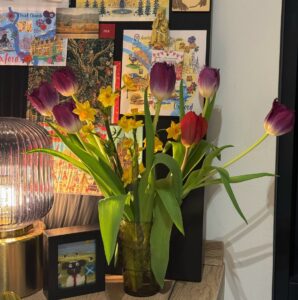
Like me, I decide to choose my dining table vase with flowers on 10 November 2024.jpg © 2024 by Sijie Li is licensed under CC BY-SA 4.0
Step 2: Imagine Transforming It into Art
Think about how you could turn this object
into an artwork:
Would you enlarge its size?
Add colors?
Or place it in an unusual, unexpected setting?
Tip:
Believe in yourself as an artist—let your imagination run free!
Step 3: Sketch Your Idea
Create a simple sketch of the artwork using any tool (e.g., iPad, paper, or pen).
example

example of what I choose in part 1© 2024 by Sijie Li is licensed under CC BY-SA 4.0
Don’t worry about perfection; just focus on capturing your idea.
Part II: Doodling Expression (5 minutes)
Step 1: Choose Colors
Blindfold yourself and randomly pick two colors,
then choose two of your favorite colors.
Step 2: Let Your Creativity Flow
Doodle freely on paper:
Don’t worry about whether it’s pretty or precise.
It can be abstract shapes, lines, or simple symbols.
Use those colors to fill in your doodles and express your emotions.
Tips:
Choose whatever painting material you want.
(e.g., watercolor, crayons, markers)
Any doodle is okay. There are no rules.
example:
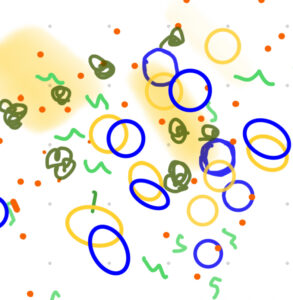
example of what I draw in Part 2 © 2024 by Sijie Li is licensed under CC BY-SA 4.0
After you are finished,
Thinking about
Do the colors or patterns evoke any memories?
Are the randomly chosen colors a combination you’ve never used before?
Does the contrast between blind and intentional choices create harmony or tension?
Part III: Just Remix (10 minutes)
Step 1: Choose a Classic Artwork
Select a classic work of art on the website
(e.g., Katsushika Hokusai’s The Great Wave off Kanagawa or Botticelli’s Primavera).
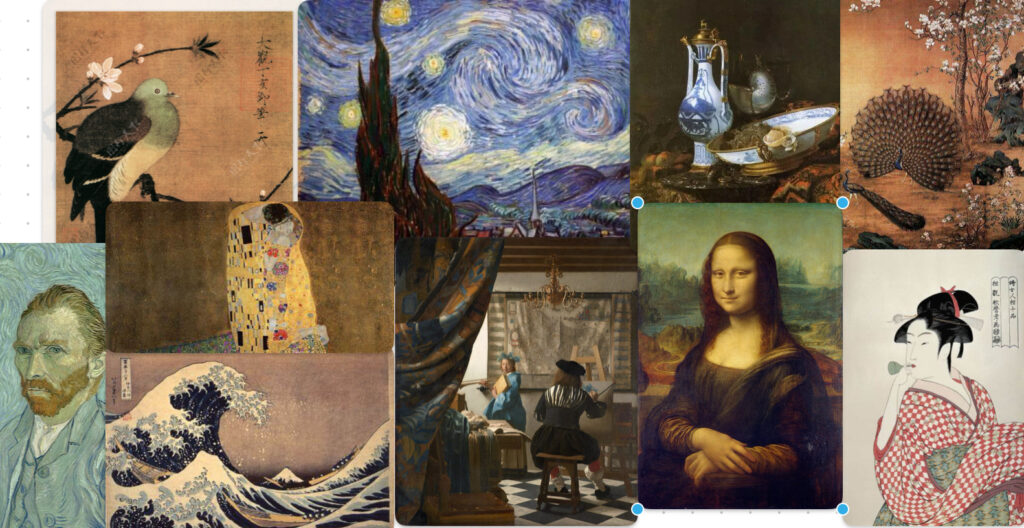
Additional Tip:
Below is a selection of websites to find famous paintings,
https://www.nationalgallery.org.uk
https://minghuaji.dpm.org.cn
https://www.musee-orsay.fr/en/collections
but of course you are free to look online as well
Step 2: Remix and Reimagine
Combine the artwork
from Part I and the doodles from Part II
with the classic piece:
Option 1: Completely reinterpret the classic piece in your own style.
example:
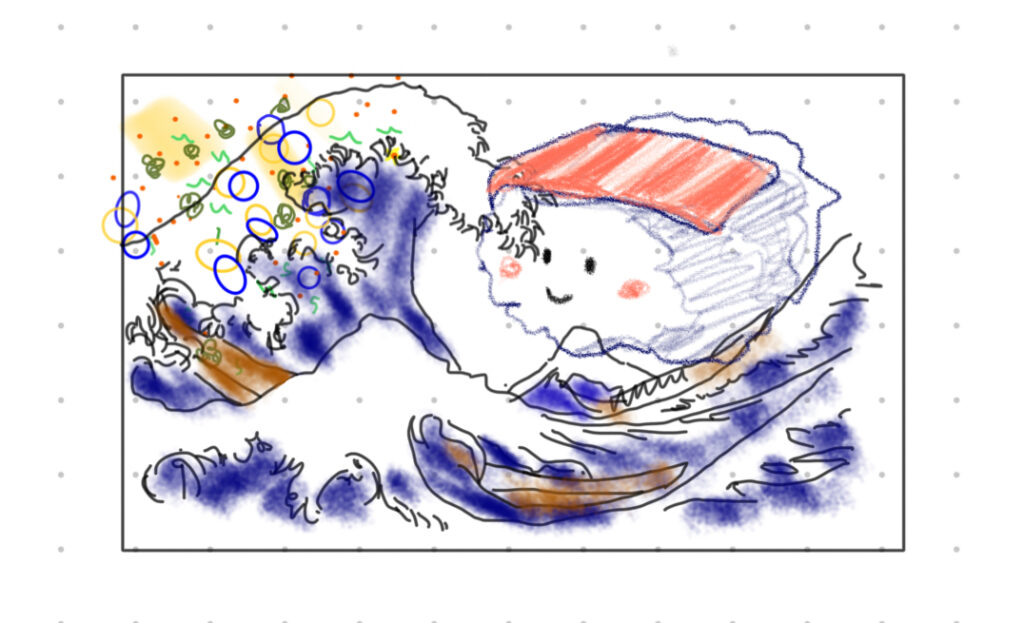
Image 1 in part 3© 2024 by Sijie Li is licensed under CC BY-SA 4.0
Option 2: Use the classic artwork as a background and overlay it with your doodles or elements.
Example:
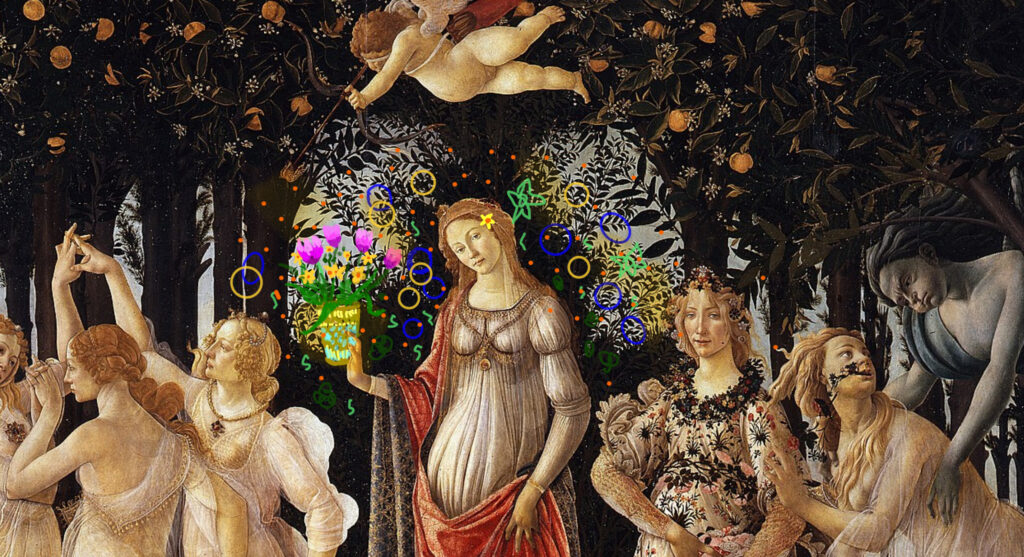
Image2 in part3 © 2024 by Sijie Li is licensed under CC BY-SA 4.0
For example, the glass of flowers from your first step is held in the hand of Botticelli’s Goddess of Spring, who is surrounded by the splashes of colour you have just scribbled.
Step 3: Share Your Artwork
If you want ,take a photo of your final creation and upload it to the sharing platform:
https://miro.com/app/board/uXjVLDPSIn8=/?share_link_id=486447944113
Write a short story about your artwork if you’d like.
Just think about”If your work appeared in a museum, how would you like viewers to interpret it?”
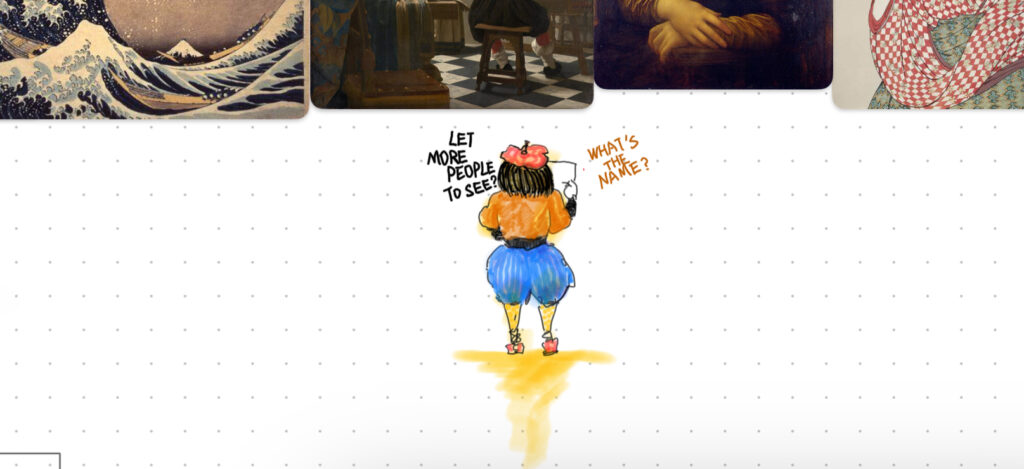

It took me four years to paint like Raphael, but a lifetime to paint like a child.
Picasso.
Through this activity, you maybe can observe your surroundings more keenly and discover the extraordinary in the ordinary. It provides you with an “artistic perspective” and allows them to feel the value and possibility of art in their daily lives.
After Learning
Let thinking about
Do you feel a relaxed, back-to-childhood freedom in these activities?
Do you get new ideas for everyday objects or classic works of art?
Can you continue to use this “artistic perspective” in your life to look at your surroundings, and enjoy the process rather than striving for perfection?

Additional part
Do you like this activity?
If you want
Choose a common object and recreate it each week
Just have fun and enjoy!
You’re the most creative.
you can keep creating for your whole life.

(Example in part 1 by Sijie Li is licensed under CC BY-SA 4.0)
(example of what I draw in Part 1 © 2024 by Sijie Li is licensed under CC BY-SA 4.0)
(example of what I draw in Part 2 © 2024 by Sijie Li is licensed under CC BY-SA 4.0)
(example of Part 3 © 2024 by Sijie Li is licensed under CC BY-SA 4.0)


